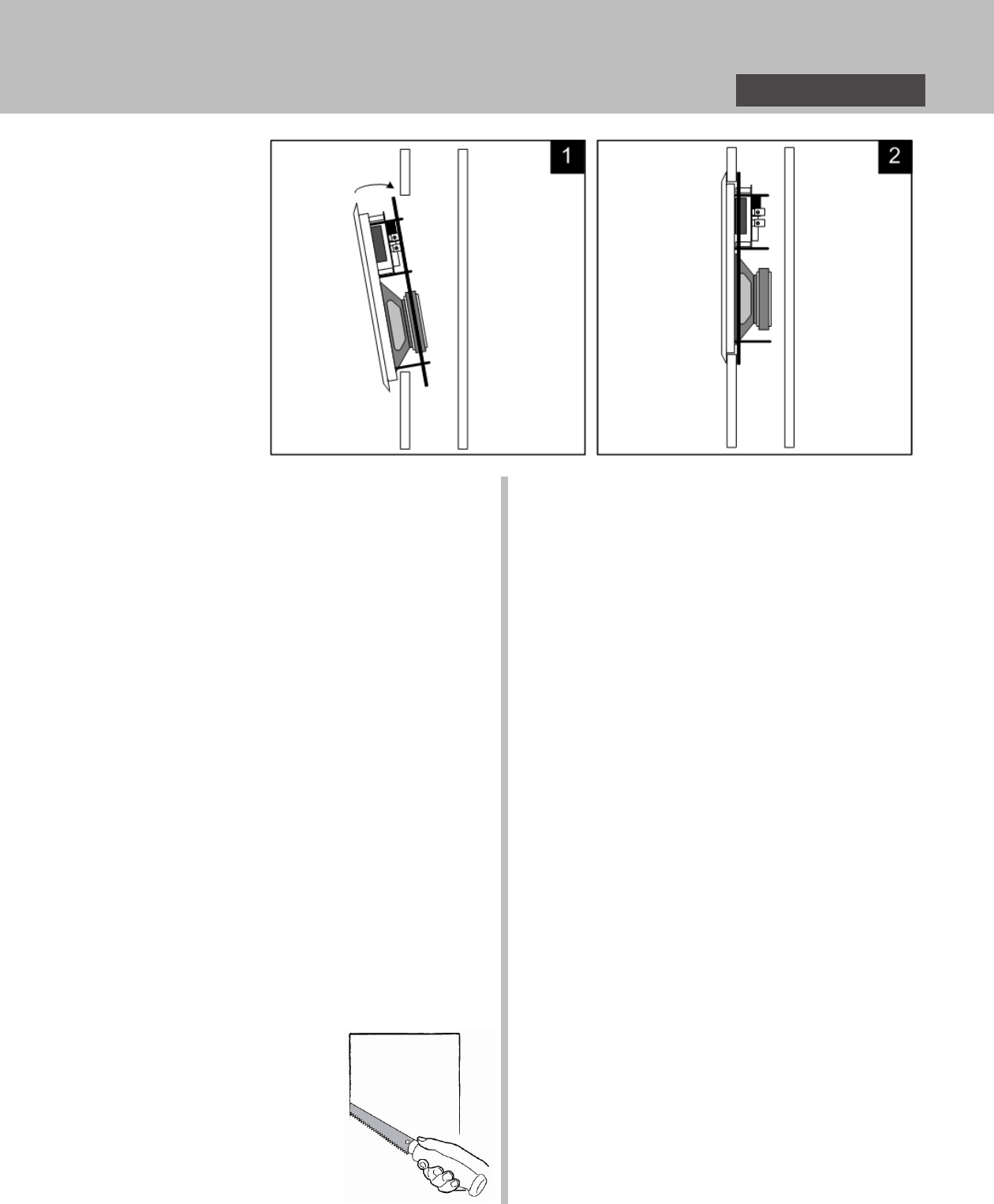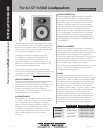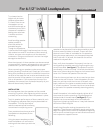
page 2 of 2Rev. A
For 6-1/2" In-Wall Loudspeakers
1-Piece Baffle & Frame
Try to keep the wire
length to a minimum.
However, allow about
2½ feet of free wire at
the speaker cut-out
and sufcient length at
the electronics to aid in
the ease of installation.
Adding extra wire later
is tedious and time
consuming.
Avoid bundling speaker
cables parallel to
electrical cables for
extended lengths.
Though the impedance
is low and the likelihood of interference low, this may
help reduce hum and RF interference. When securing
the wire, use care not to staple or nail the electrical
conductors. Doing so could result in a short that might
damage the electronics.
More than two pair of these speakers can be connected
to one amplier. However, we suggest that you consult a
professional if you are installing more than two pair.
When connecting your speakers, make sure proper
polarity (phasing) is maintained. Simply put, this means
being sure the same wire which is hooked to the positive
terminal of the amplier has its other end hooked to the
positive terminal of the speaker. It is important to check
this on all speakers. If the connections on one of the
speakers are reversed, (out of phase) the quality of your
bass will be seriously impaired.
INSTALLATION
As the diagrams show, the speakers utilize a metal
mounting ring which, after tightening with the screws
provided, acts as a clamp to hold the speakers in place.
To aid in speaker performance, a brous material, such
as berglass or polyester ber, may be placed behind
the speaker. This may also help to
reduce unwanted sound from being
transmitted into adjoining rooms.
Once you determine where you wish
the speakers to be placed, do the
following:
Using the paper template provided,
mark the speaker cut-out location
making sure that where you wish the
speakers to be placed will not be obstructed by a stud
or other material hidden in the wall. Proper use of an
electronic stud-nder is invaluable for this operation.
Using the proper equipment, cut the appropriate sized
hole in the wall. On drywall, the cleanest cuts will be
made with a drywall saw.
Next, verify that the speaker ts properly into the cut-
out by passing the black mounting ring through the cut-
out as illustrated. (see gure 1) The speaker should t
comfortably in the cut-out hole. If the hole should have
been cut a little too large the ange on the frame should
cover this. Remove the speaker from the hole.
If the wire has not yet been run, do so, now that you have
access to the wall’s interior. Once the speaker wire has
been run, pull the end of the wire out of the wall, strip
back a section of the jacket as needed, and then expose
½" of each conductor. Connect the wire to the terminals
on the back of the speaker assembly, observing polarity
(+ & -).
Install the speaker in the wall and gently tighten all of
the screws so that the mounting ring clamps against
the back side of the wall board. (see gure 2) If your
speaker has six screws begin with the middle pair.
Avoid over-tightening the screws or it may later become
difcult to install the grille.
Install the grilles after testing the operation of the
speakers. The grilles are installed by gently working the
edge of the grille into the frame of the speaker beginning
at one corner and working one or both directions around
to an adjacent or opposite corner.




